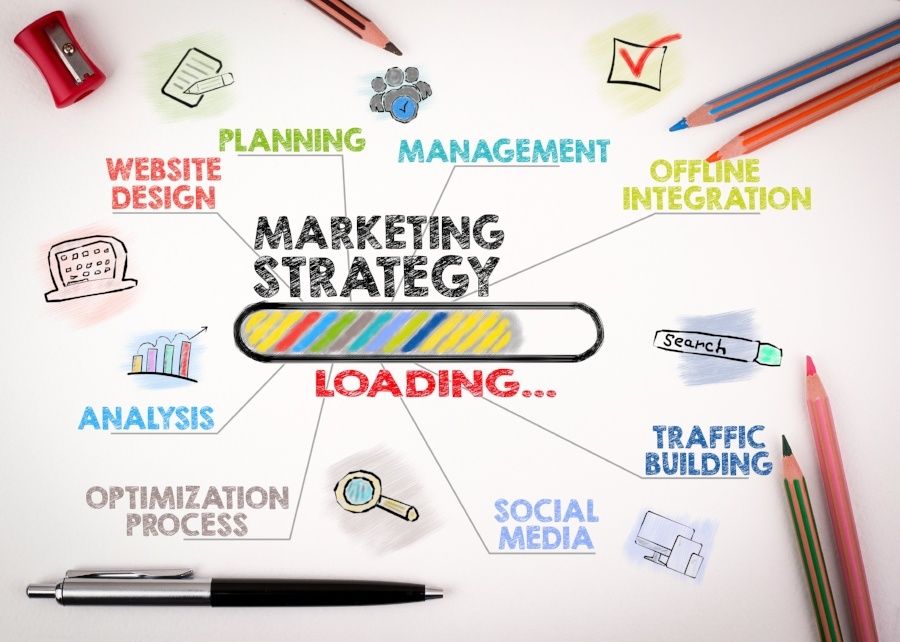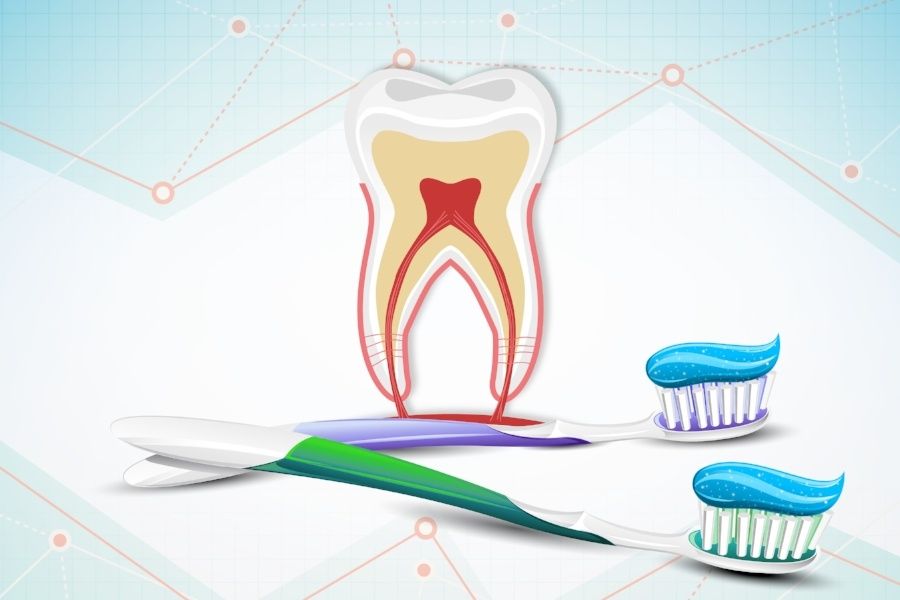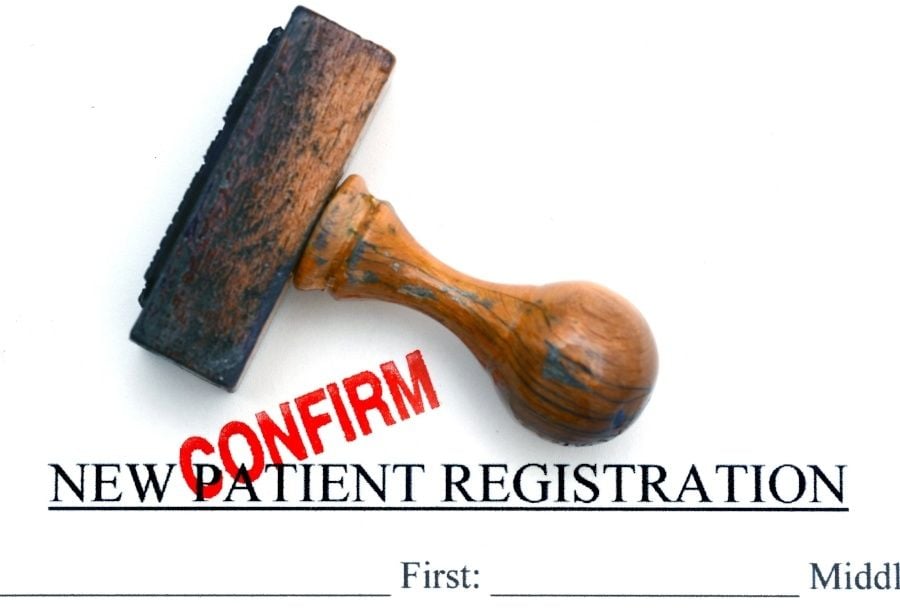
Where do people look for service providers these days? They search online. Online searches have become the go-to information source when consumers seek service professionals. Patients go online to look for dentists and read reviews about them.
You need an online presence if you want to be found.
However, many dentists find online marketing challenging:
- They don’t have the time and resources to do online marketing.
- They have trouble driving high-quality traffic to their websites.
- They have difficulty turning web traffic into leads.
- They don’t know how to pre-qualify leads so they can focus their resources on prospects that are most likely to convert.
- They aren’t measuring the right metrics, e.g., some are misguided to focus on hits, clicks, or the number of social media followers, forgetting that they won’t generate revenue unless the phone starts ringing!
The problem with digital marketing, for many dentists, is the lack of personal touch. After all, building trust is critical to attracting and retaining patients.
To effectively market your dental practice, you need a framework that can address these challenges and guide prospects to engage with your business in a way that builds long-term relationships.
Inbound marketing, with its focus on attracting high-quality leads, building relationships, and cultivating loyalty, is a perfect methodology for marketing a dental practice.
According to research, dental offices that implement inbound marketing experience remarkable results:
- 45% growth in traffic when blog counts increased from 11-20 to 21-50.
- 106% more traffic for dental practices with 51-100 Twitter followers, compared to those with 25 or fewer.
- 451% boost in leads after implementing automation to nurture prospects.
One dental office increased web traffic by 189%, the number of leads captured by 300%, and new patients generated from their website by 50% after implementing the strategy.
What is Dental Inbound Marketing?
According to Hubspot, an industry authority, inbound marketing focuses on attracting customers through relevant and helpful content.
The goal is to add value at every stage in the buying journey so prospects progress to the next step in the customer lifecycle.
With inbound marketing, prospects find you through channels like blogs, search engines, and social media.
Unlike outbound marketing, inbound isn’t about fighting for prospects’ attention. By creating content that addresses the problems and needs of your ideal patients, you attract high-quality leads while building trust and credibility for your business – which will lead to conversion.
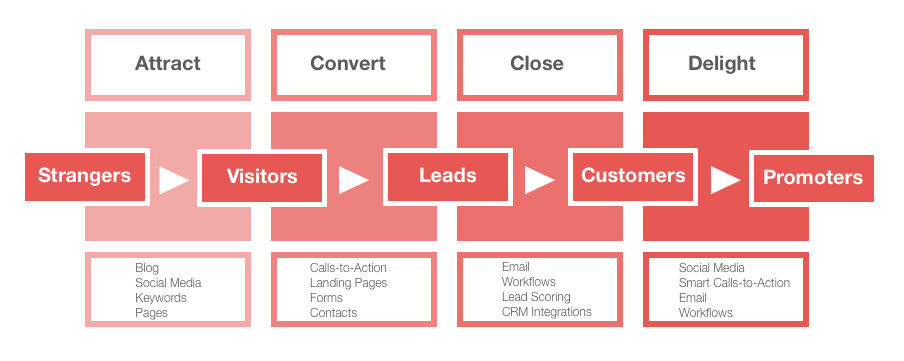
The Essential Components Of Effective Dental Marketing
To get the most out your marketing dollars, you need a well-designed strategy to guide your inbound marketing efforts.
An inbound strategy should cover the following:
Business Objectives
What you need to do to generate leads is different from what’s required to retain patients. Defining your goals will help you select the most suitable tactics for your marketing.
In addition, you need to establish key performance metrics (KPIs) so you can measure the effectiveness of your efforts and make adjustments to increase ROI.
Buyer Personas
Understanding whom you’re marketing to allows you to focus resources on reaching high-quality leads in the right place at the right time with the right message.
Your buyer persona should cover more than demographic information and address your ideal patient’s psychology, desires, values, challenges, habits, and preferences.
The information will help you create relevant and valuable content that resonates with your audience so you can generate high-quality leads and cultivate trust.
Here is an example of a buyer persona:
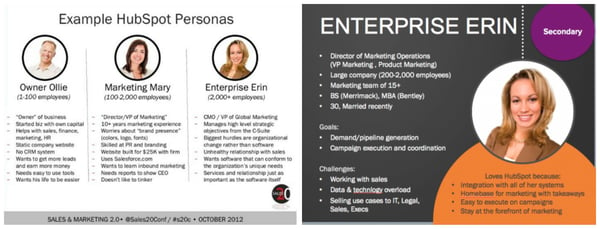
Customer Journey (Life-cycle Stages)
A customer journey shows the different stages of how prospects or patients interact with your business. It’s constructed from the patients’ perspective to map out their experiences.
The customer journey helps you understand what prospects need to know and how you should position your content so the audience will take the next step with you.
Content Map
A content map sums up your buyer personas, their customer journey, the kind of content that will appeal to them at each stage, and the channel through which prospects and clients interact with your business.
The document helps you stay focused on your content production and promotion efforts. It also allows you to clearly communicate your content strategy so you can effectively outsource these tasks.
Here is an example of a content map for a business owner persona:
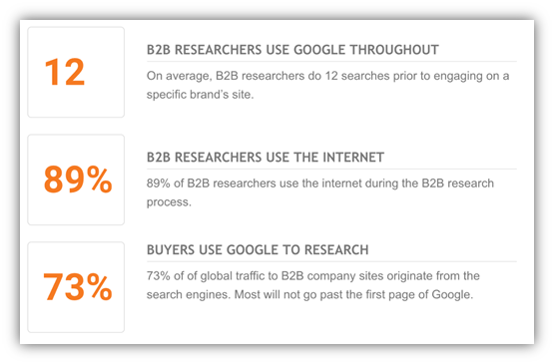
Content Calendar
Next, you need a plan to coordinate production, implementation, and promotion of your content.
Refer to your marketing calendar to make sure your content is supporting your other promotional efforts. Don’t forget to incorporate seasonal content based on major holidays or local events.
Measurement Of Success
With today’s technology, it’s easy to gather metrics and track the success of your campaigns against the KPIs established in your strategy.
Make sure to review your data periodically to see what’s working and what isn’t so you can fine-tune your strategies and get the most out of your marketing budget.
Applying Inbound Marketing To Your Dental Practice
The four stages of inbound marketing – attract, convert, close, and delight – give you the framework to organize your content production and promotion efforts.
Let’s look at each of these stages and what you can do to achieve the intended business objectives:
1. Attract
You don’t want to just drive random traffic to your website. Instead, focus on getting the attention of high-quality leads who are most likely to turn into patients.
Being in the right place at the right time with the right content is the key to attracting the right leads.
Search Engine Optimization (SEO)
Most people start with Google when looking for products or services. In fact, 70% of dental-related web traffic starts from an online search.
There are many ways to optimize your website for search engines so your business shows up on the search results page when people look for a dentist in your area.
Don’t overlook local SEO – by signing up to Google My Business, you’ll have a better chance of getting found when prospects type in “dentist in [ location ]” or “dentist near me” in the search box.

Blogging
Publishing fresh content on your website signals to search engines that you’re relevant and your business is active.
Blogging also gives you the opportunity to get ranked for more keywords – especially long-tail phrases that may not have made their way into your website pages.
Not to mention, 2 in 3 adults research their dental issues before contacting a dentist. Blogging allows you to attract new patients by offering educational resources.
Make sure your content is relevant and valuable to your ideal patients. It should be informative and not be focused on “selling.” Don’t forget to write enticing headlines so visitors will click through to your website.
Social Media
Publishing remarkable content won’t do much if your ideal audience can’t see it.
Social media is a great way to promote your content, engage with your prospects, and cultivate relationships. Social media marketing can be overwhelming with the many different platforms and strategies.
If you’re starting out, pick a couple of platforms on which your prospects tend to hang out and you feel comfortable using to build a following.
2. Convert
After attracting visitors to your website, you need to convert them from visitors into leads by collecting their contact information so you can continue the conversation, build trust, and follow up.
Lead Magnets
Prospects in the early stage of their research may not be ready to pick up the phone or make an appointment. Offer a piece of in-depth content in exchange for their contact information so you can add them to your email list and continue marketing to them.
Customer Relationship Management (CRM)
As you collect information of and interact with prospects, you need to keep track of these relationships so you can follow up with the most relevant content and offers.
A centralized system that keeps track of these leads will help you serve them more effectively at every stage of their customer journey.
Pre-Sale Customer Care
Inbound marketing aims at drawing in prospects so they’ll get in touch to inquire about your services. As such, you need a system in place to respond timely and professionally.
In addition, your website should list multiple ways through which patients can contact you or get their questions answered. Besides phone and email, you can use live chat, social media messaging, or an FAQ page on your website.
3. Close
Sitting on a large email list won’t do any good if subscribers aren’t turning into patients.
This stage focuses on nurturing leads and building trust with them. Use content geared towards addressing objections or converting leads into patients, e.g., testimonials, case studies etc.
Email Marketing
Email allows you to reach a large number of prospects with minimum resources. Did you know that email marketing could generate an ROI of 3800%?
Instead of sending a one-size-fits-all email, segment your list and leverage personalization technology to deliver content and offers most relevant and valuable to the life-cycle stages of each prospect or patient.
Lead Scoring
Following up with prospects individually is a great way to turn “hot” or “warm” leads into patients. As you continue to generate leads and build your list of prospects, it won’t be practical to reach out to each person.
Create a system to evaluate the potential of a lead to convert, so you can focus your time and resources on the most qualified prospects.
4. Delight
Turning a lead into a patient isn’t the end. Inbound marketing also involves cultivating relationships with existing patients so they’ll not only return to your practice but also tell others about it.
At this stage, focus on increasing engagement and exceeding expectations.
Patient Referral Program
Word-of-mouth marketing is one of the most powerful ways to grow a local service business. You can encourage your existing patients to spread the word by offering a referral program.
Social Media Listening
When your patients talk about your practice on social media, make sure to respond and join the conversation.
You’ll gain valuable insights into how you can improve your services. Don’t forget to follow up to ensure your patients are happy with their experiences.
Patient Appreciation Events
As a local business, you have the advantage of building relationships with in-person events.
Host appreciation events periodically and invite your best patients. Encourage them to bring their friends – they’re more likely to be “just like your best customers” and therefore, more likely to become your patients as well if they have the opportunity to learn more about your practice.
Leverage the Power of Inbound Marketing For Your Dental Practice
Inbound marketing is a very powerful methodology for promoting your dental practice. However, the many different pieces and moving parts can be overwhelming if marketing isn’t your full-time job!
Here at RiseFuel, we have spent 3 years perfecting inbound marketing for the dental industry.
From multi-channel marketing to educational resources and marketing personalization, we take the best of inbound marketing and turn them into strategies dentists can use to acquire and retain more patients.




